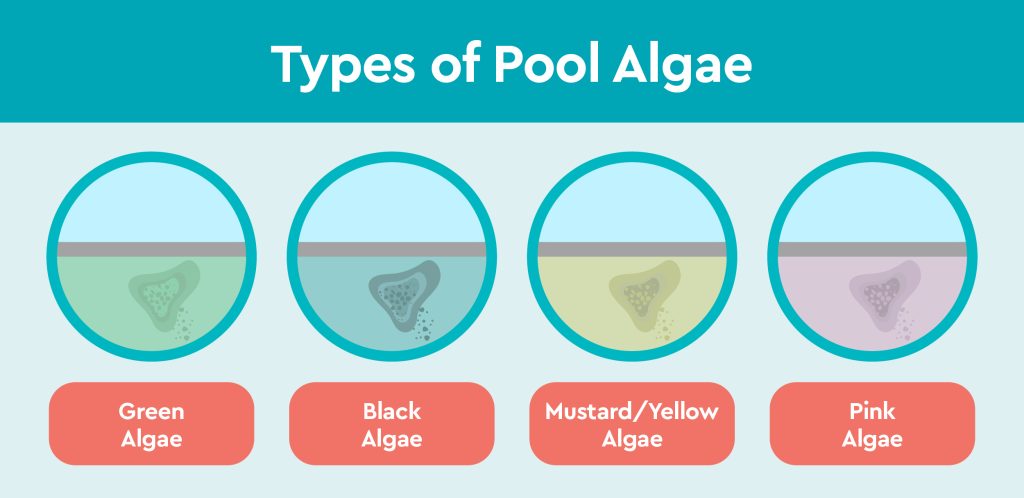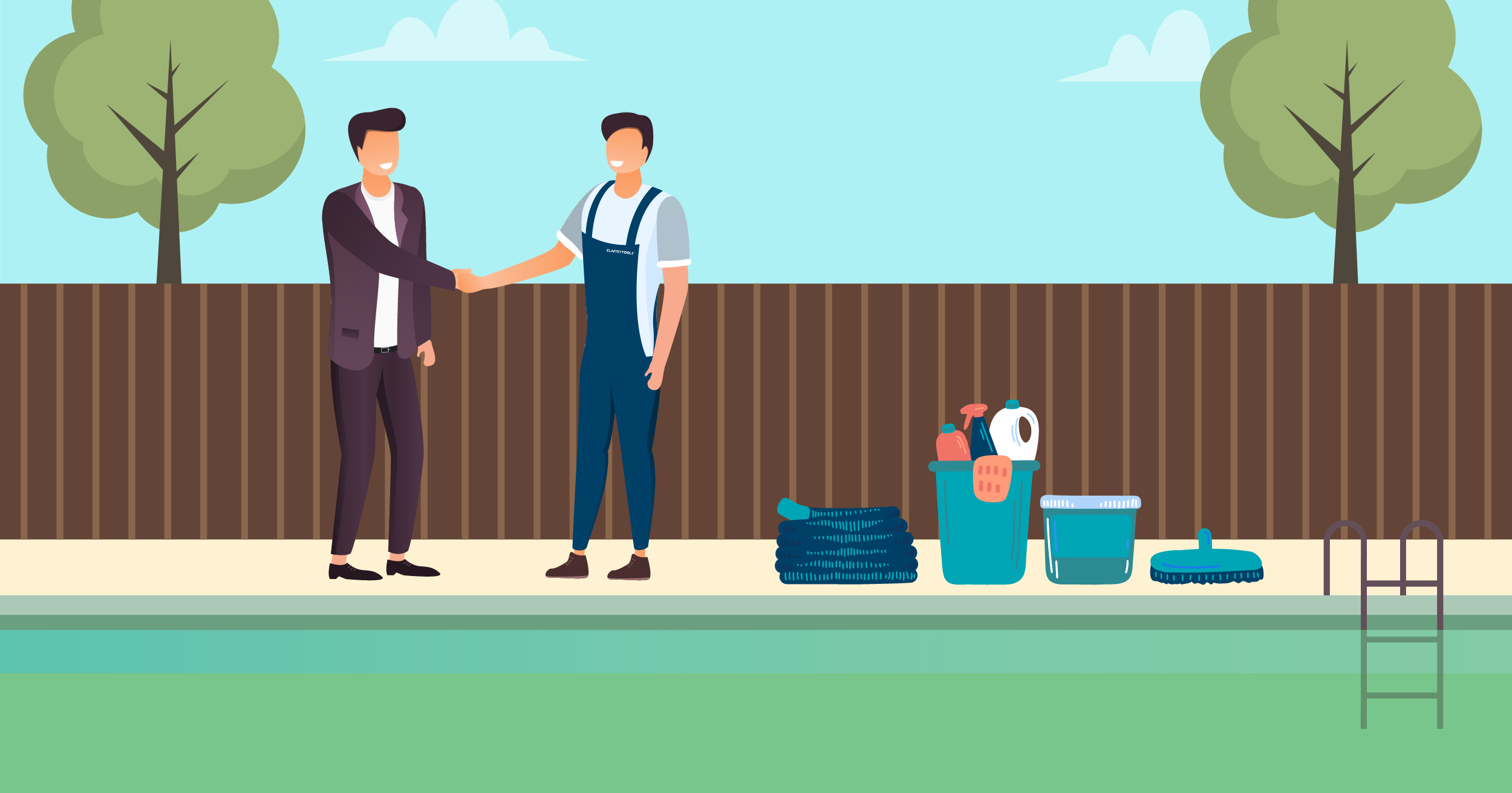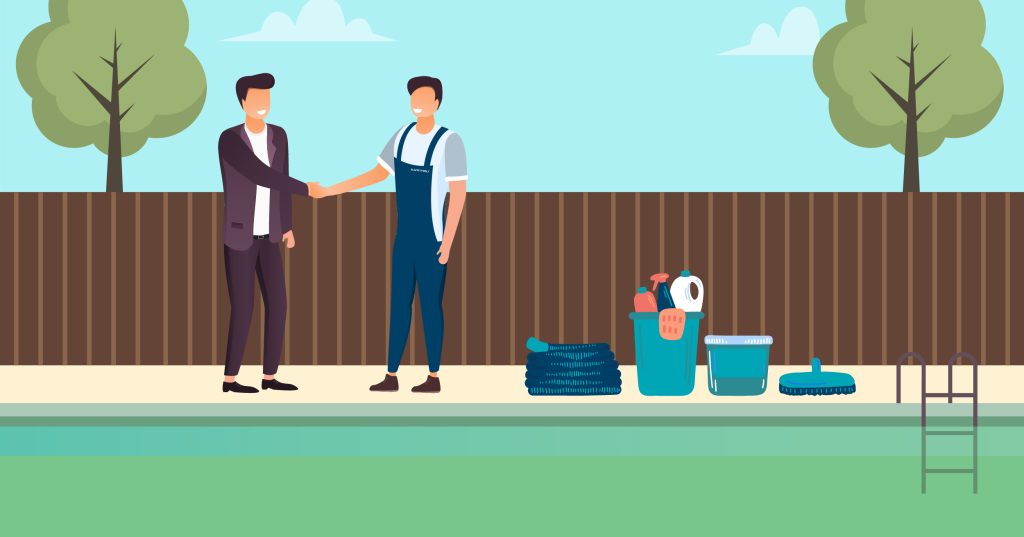Types of Pool Algae and What They Mean
Reading Time: 3 minutes
If you own a backyard pool, then you’ll want to keep it in the best shape possible to ensure you and your family can make the most of it.
However, there are several things that can threaten the health of your swimming pool, including algae.
There is a wide range of algae types to look out for, all of which can cause damage and harm if not properly treated.
In this article, we’ll explain the different types of pool algae and what they mean.
What is algae?
Algae is an organism that grows in water and thrives in warm, wet conditions – making swimming pools an ideal breeding ground.
In pools, you may see algae clinging to floors, walls, steps, or floating on the surface of the water.
While algae is relatively harmless most of the time, and, in fact, in some instances essential to local ecosystems, it makes swimming pools look green and unkept, can cause material discoloration and lead to quicker renovation, and may cause harm to people swimming in algae-infested waters.
Algae is an umbrella term for such organisms and as a result, there are a wide range of different types.
Let’s take a look at some of the most common kinds you may encounter in your pool.
Four main types of pool algae
There are four main types of pool algae that you will likely find in your swimming pool.

This includes the following:
Green algae
Green algae is perhaps the most common type of swimming pool algae in Texas and can appear in a range of tones including blue-green, yellow-green, and dark green.
What’s the cause?
Usually found in lakes and ponds, this algae is created from abnormal amounts of organic matter in your pool mixing with high temperatures.
Where do you find this?
Green algae usually starts out in small clusters on pool steps or the structure’s corners before spreading to other areas. As it continues to grow, you may see it on the pool’s surface and overall the pool will have a green tint.
Black algae
Technically, black algae is not algae at all but single-celled organisms. However, it behaves in much the same way and can carry harmful bacteria.
What’s the cause?
The worst and most damaging type of algae you can encounter, black algae is normally a result of extremely poor pool maintenance.
Where do you find this?
Normally, black algae will be found in a pool’s shady areas, as well as any cracks and crevices.
It is also more common in coastal areas.

Concerned about the increase in pool algae? Our Claffey Pools team offers a maintenance service that takes care of cleaning, inspections, chemistry analysis, and much more on your behalf.
Contact Our ExpertsMustard algae
Mustard, or yellow, algae is one of the hardest to remove once it sets in due to its resistance to chlorine.
What’s the cause?
You’re only likely to experience mustard algae if your pool is located in a neighboring river where the algae is present and when the wind is strong enough to blow the spores into your pool. Again, this algae is created from local organic matter, mixing with high temperatures.
Where do you find this?
Mustard algae can impact any area of a pool if it comes in contact with it, but it’s unlikely to be much of a problem in Southlake, Texas.
Pink algae
Also referred to as ‘pink slime’, pink algae is an extremely aggressive algae type that can be damaging to a pool’s structure as well as human health.
What’s the cause?
Pink algae tends to form when the pool’s pH level is too low and poor sanitization has occurred.
Where do you find this?
It is most common for pink algae to occur in piping and PVC tubes within the pool’s structure. It is also normal for it to be found along a pool’s waterline.
How to best treat algae
Algae can grow and multiply at an incredible rate, so if you notice the signs of any algae in your pool it is important to address the problem as soon as possible.
The best way to prevent algae from growing in your pool is to conduct weekly pool maintenance.

At Claffey Pools, we understand that maintenance can be arduous and time-consuming, especially when you just want to enjoy your pool and its benefits.
This is why we provide all of our customers in Southlake, Colleyville, and Coppell with a weekly cleaning and maintenance service that takes care of cleaning, inspections, chemistry analysis, and much more on your behalf. This leaves you with a sparkling pool that is free of algae and can be enjoyed by you and your loved ones.
To find out more, contact our team today.